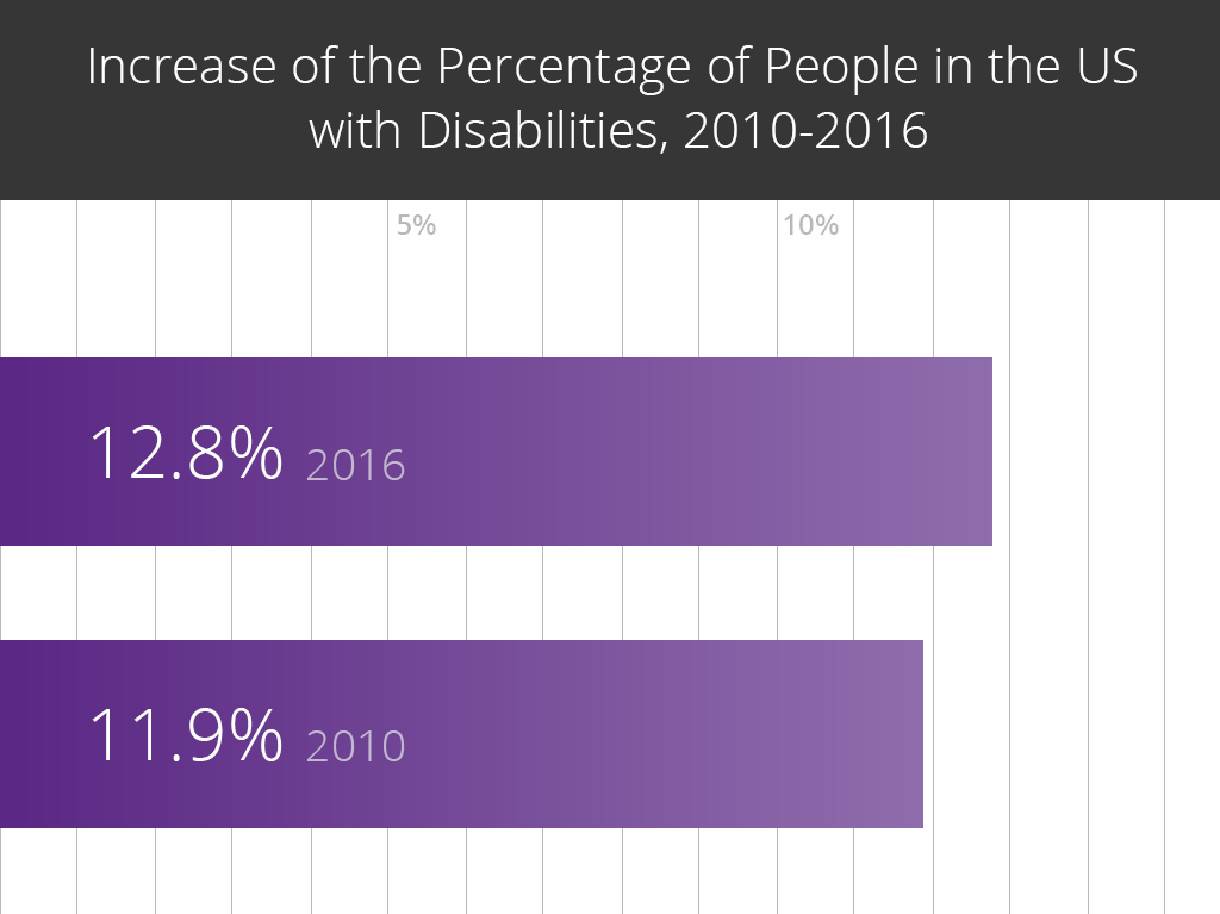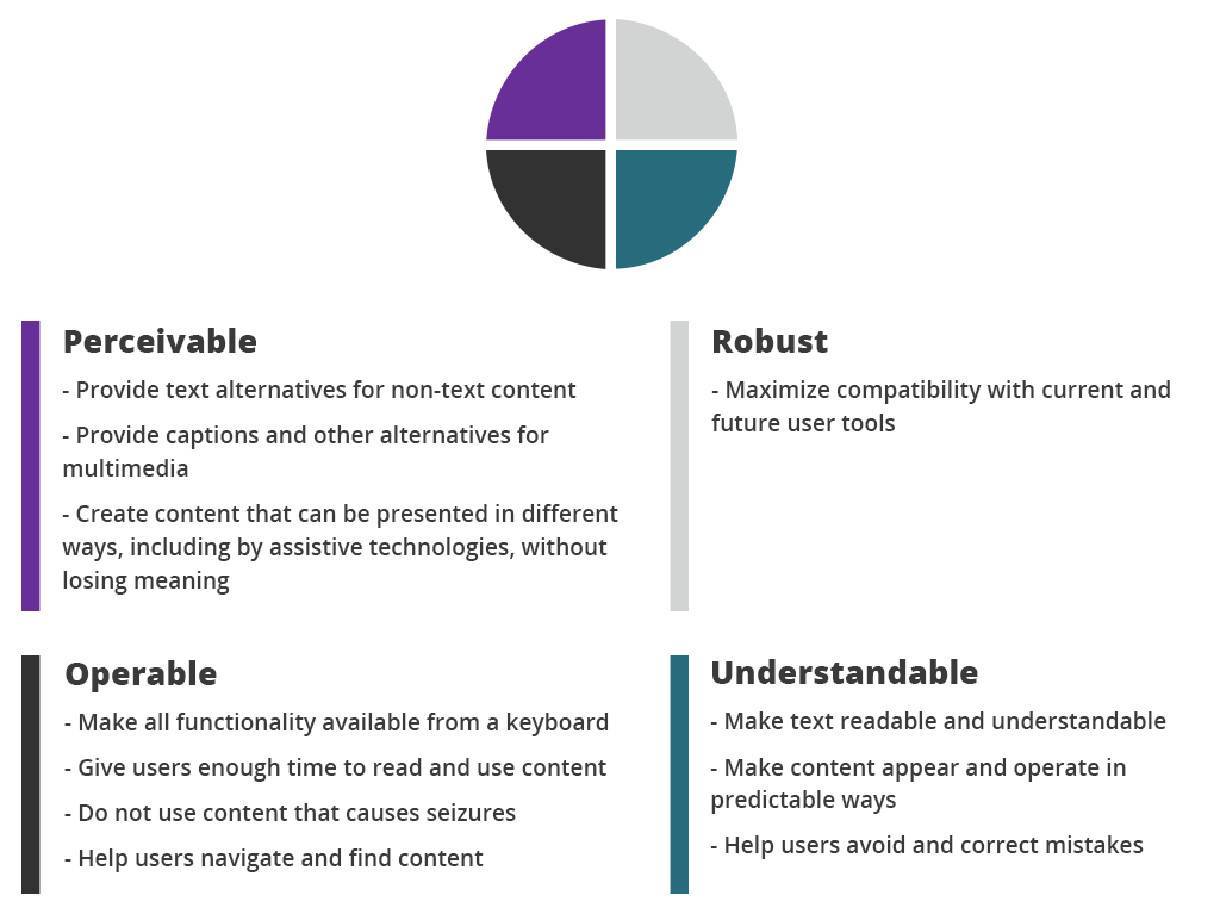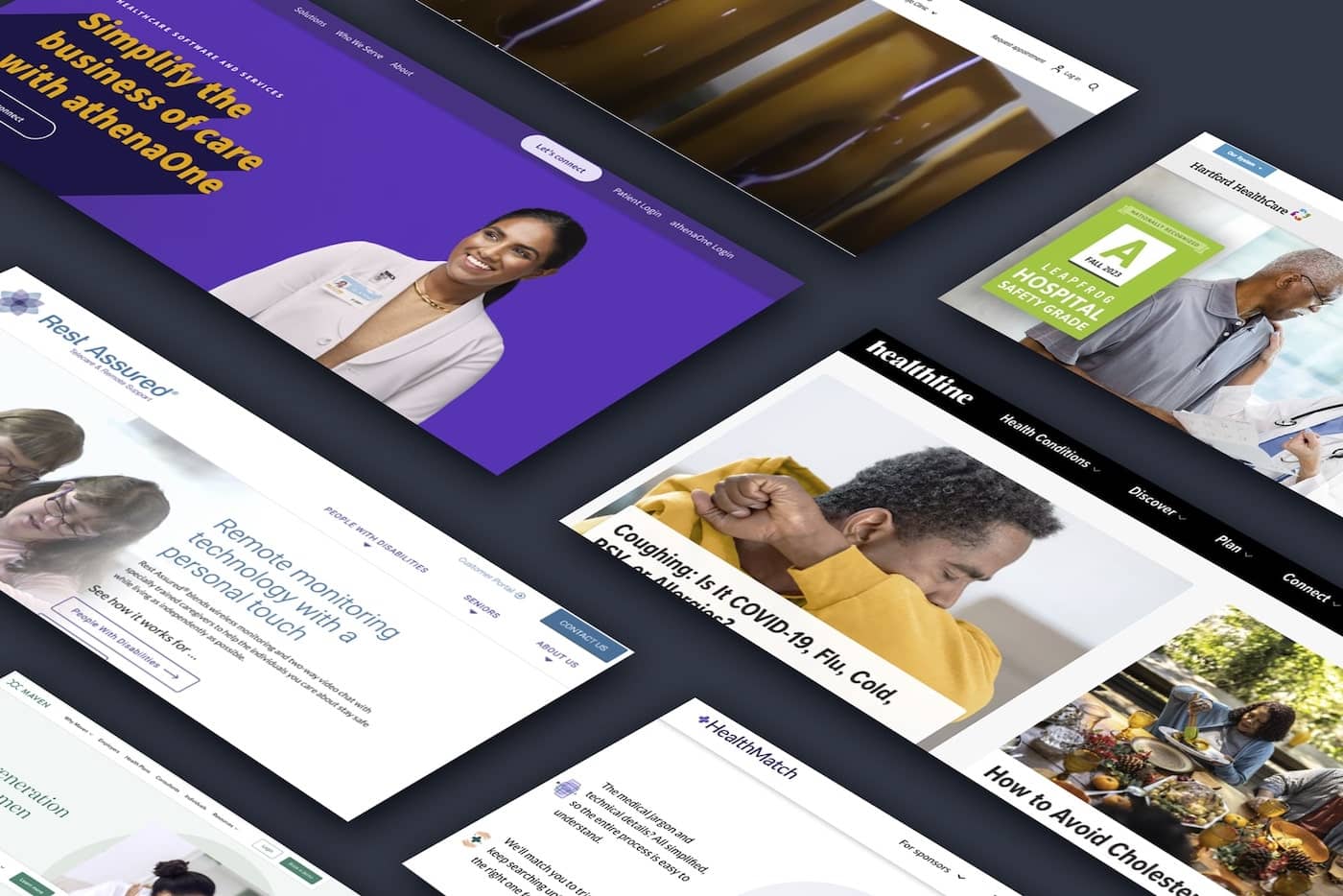

Why Your Business Needs an ADA Compliant Website
When the Americans with Disabilities Act (ADA) was passed in 1990, Congress sought to ensure that businesses and public service providers took important and necessary steps to accommodate people with disabilities.
But the internet as we know it today did not exist in 1990, and ADA legislation has not kept pace with today’s digital world, where much more social and economic activity now happens online. As a result, many U.S. businesses are struggling to understand their legal obligations to provide web accessibility in order to comply with the ADA.
Why Your Business Website Must Be ADA Compliant
Based on case law decided in U.S. courts, as well as official statements issued by the Department of Justice, here’s what we do know: For websites to be considered ADA-compliant, they must be accessible to users with a range of disabilities.
It’s not hard to understand why web accessibility is an important mandate today. In 1990, the term “places of public accommodation” as written in the ADA referred to any areas where people would typically gather to participate in society. These included businesses and public areas intended for meeting in groups, playing games or sports, shopping for goods or services, visiting with legal or medical professionals, and more. That’s why ADA requirements for these spaces typically included wheelchair-accessible ramps, accessible water fountain spouts, adding raised and Braille characters to signs, and more.
Today, those same social and economic activities happen far more often on the internet. We regularly engage with organizations and each other through a range of connected devices and technologies that were mostly science fiction in 1990. As this cultural shift away from traditional, physical gathering spaces in our communities continues, the ADA becomes less effective because its language hasn't been updated to reflect this new social reality.
Related Read: Web Accessibility Best Practices
At least the Department of Justice provided some guidance in 2018, flatly stating that "the ADA applies to public accommodations’ websites" and that requiring businesses to include those who are disabled or impaired in their virtual markets and public spaces is "consistent with the ADA’s title III requirement that the goods, services, privileges, or activities provided by places of public accommodation be equally accessible to people with disabilities."
But is compliance the only reason a business website should satisfy ADA obligations? Absolutely not. To think so would be naïve at best. Let's examine a few reasons why:
Benefits of Accessible Websites Beyond ADA Compliance
Web Accessibility improves user experience on the internet for everyone.
Most websites aren’t designed to accommodate those who have vision or hearing impairments, or learning, cognitive, and other disabilities. In fact, a recent study of the world's top 1 million websites found that almost 98% of them were noncompliant. When websites fix this and web accessibility is achieved, they become easier for the disability community to navigate and use, which actually makes those websites easier for all of us to use.
Accessible websites open your business to new demographics with massive buying power.
Businesses with inaccessible websites make it harder for people with disabilities to buy their products, use their services, engage with their brands, interact with their content, and more. Business owners that understand the importance of serving all their customers treat web accessibility as a necessity, not a feature.
Avoiding ADA lawsuits could save your business thousands in penalties and legal fees.
In 2018 there was a 200% increase in lawsuits targeting websites and mobile apps for their alleged noncompliance with ADA. Many of those lawsuits include restaurants and retailers, but other industries have also been involved. Lawsuits can easily be avoided, however, by having a website that’s fully accessible to everyone.
ADA-compliant websites are optimized for Search.
Having an accessible website improves your SEO strategy because enhancing the functionality and usability of your site helps Google crawl your site better, which typically results in your site being awarded higher organic search rankings. Adding alt text to images, transcribing audio files, providing text and audio descriptions for videos, adding captions to videos, having keyword-relevant link and header titles, descriptive H1s, and more can all benefit your search optimization efforts.
Offering an accessible website is the right thing to do.
Simply put, it’s always nice to help people and provide everyone with equal opportunities. From a business perspective, web accessibility is both a moral and ethical obligation, not to mention a rare “win-win” for both the company and their customers who benefit from being able to use their website. Having an accessible website demonstrates that your organization is committed to inclusion and helping others by promoting fairness and doing things the right way.
Related Read: Social Media Accessibility Best Practices
U.S. Disability Data and Statistics
- In 2010, 11.9% of Americans had disabilities, and the percentage has increased every year since.
- As of 2017, 14.8% of the U.S. population reported having a disability.
- As of 2017, 28.3% of disabled U.S. citizens reported a hearing disability.
- As of 2017, 18.5% of disabled U.S. citizens reported a vision disability.
- As of 2017, 37.8% of disabled U.S. citizens reported a cognitive disability.
- As of 2018, about 1-3% of the global population (roughly 200 million people, including 6.5 million Americans) have an intellectual disability.
- From 2017 to 2018, the number of website accessibility lawsuits nearly tripled from 814 to 2,258 cases.

The number of people in the U.S. who have disabilities is growing
As the data indicates, the U.S. disability community is growing every year–not just in volume, but also in percentage. This statistical trend proves that web accessibility is more important now than ever before.
How is ADA Compliance for Websites Defined?
The ADA was enacted to ensure that people with disabilities are given the same opportunities that are provided to the non-disabled. It protects people with disabilities from facing discrimination related to:
- Employment
- State and local government
- Public accommodations
- Commercial facilities
- Transportation
- Telecommunications
This impacts all businesses that provide goods and services to the public, including grocery stores, restaurants, bars, movie theaters, banks, hotels, medical and dental facilities, schools, forms of public transportation, museums, daycare facilities, theme parks, fitness centers, consumer goods stores, law offices, and more.
So how can businesses ensure that their websites are ADA-compliant? By meeting World Wide Web Consortium (W3C) standards for web accessibility, outlined in their Web Content Accessibility Guidelines (WCAG).
What is WCAG?
The Web Content Accessibility Guidelines (WCAG) are a comprehensive series of recommendations that explain how to make website content more accessible to those with disabilities. Its uniform website standards enable web accessibility for all users, no matter what device or assistive technology (such as screen readers) they might be using.
Unlike the ADA, which is a law that ensures the fair treatment of people with disabilities across various aspects of public life, the WCAG focuses mainly on web accessibility, serving as a roadmap for web developers who want their websites to be more accessible to disabled users.
The WCAG’s 12 guidelines for web accessibility are condensed into four main principles, shown below with examples of WCAG recommendations for each:
The 4 Principles of WCAG
-
Perceivable
- Provide text alternatives for non-text content
- Provide captions and other alternatives for multimedia
- Create content that can be presented in different ways, including by assistive technologies, without losing meaning
- Make it easier for users to see and hear content
-
Operable
- Make all functionality available from a keyboard.
- Give users enough time to read and use content.
- Do not use content that causes seizures.
- Help users navigate and find content.
-
Understandable
- Make text readable and understandable.
- Make content appear and operate in predictable ways.
- Help users avoid and correct mistakes.
-
Robust
- Maximize compatibility with current and future user tools.
Along with WCAG's guidelines and principles, there are also varying, testable levels of success criteria, which are known as Level A, Level AA, and Level AAA. These success criteria components help determine exactly how accessible websites are, with A being a low level of accessibility and AAA being the high level of accessibility. The type of business you operate determines whether your website is expected to have Level A, AA, or AAA compliance.
Web Accessibility Supports Corporate Diversity
Each fiscal year, many companies are spending thousands of dollars – sometimes even millions – on corporate diversity initiatives, such as hiring diversity officers or implementing company diversity training programs. The goal is not only to diversify their workforce through the hiring process, but also to ensure these companies work with diverse suppliers.

Corporate diversity is about more than diverse suppliers and training sessions
While it’s great that these companies are making at least some effort to think about equal opportunities and treatment for all, they’re still neglecting their websites and often pursuing diversity at the expense of people with disabilities.
Web accessibility tends to fly under the radar when thinking about equality for everyone on the internet. Many companies fail to realize that they’re excluding people with disabilities when they do not invest resources into making their websites ADA-compliant.
If companies truly want to commit to diversity – both internally and externally – then ensuring that their websites are ADA compliant is a simple (and remember, legally necessary) step they must take.
The Future of Web Accessibility
Web accessibility is constantly evolving to help web developers build sites that are more friendly and inviting to users with disabilities. Now more than ever before, new assistive technologies are being developed to make websites more accessible. One example of an important, widely-adopted and commonly-used assistive technology is the screen reader.
For individuals who are blind, low-vision, or visually impaired, screen readers help make content on websites more accessible and understandable. In November of 2017 at the Boston Accessibility Conference, experts from MIT, Open Access Technologies, Aira, and the Massachusetts Association of the Blind gathered to discuss how artificial intelligence (AI) could help advance screen readers.
Experts there also talked specifically about how AI could improve screen reading software through facial- and object-recognition, utilizing algorithms to elicit a sensory response, and using virtuality reality (VR) technology, all to help people with disabilities navigate through various types of web content.
While more research needs to be conducted for future screen reader capabilities, businesses need to keep these technological advancements on their radar and stay ahead of trends, rather than try to play catch-up.
How to Make Your Website ADA Compliant
Moving forward, it’s very important that businesses are proactive, rather than reactive, when it comes to web accessibility. Switching to, or building, an ADA-compliant website can only help your business and expand your offerings to people with disabilities who previously haven’t been able to access your website.

The four main principles of web accessibility, per WCAG
For businesses performing digital audits or looking to update their current websites to be ADA-compliant, the best option is to partner with a digital agency that has knowledge and experience surrounding WCAG and ADA compliance.
Related Read: Web Accessibility Best Practices
While there are tools and checklists available online that can help with digital accessibility, having a digital agency identify and implement best practices and techniques will better equip your website to comply with ADA and WCAG standards.
We’re proud that our website designs have earned AAA-level ADA compliance and opened our clients' "digital front doors" to an audience that deserves fair and equal access.
As the world's economic activity continues to shift towards digital mediums–especially in the wake of the Covid-19 pandemic– websites are becoming the most vital salesperson and storefront for many businesses. That's why it only makes sense to make business sites accessible to everybody.



